Singapore Drone Video
Singapore (/ˈsɪŋ(ɡ)əpɔːr/ ⓘ SING-(g)ə-por), officially the Republic of Singapore, is an island country and city-state in maritime Southeast Asia. It is located about one degree of latitude (137 kilometres or 85 miles) north of the equator, off the southern tip of the Malay Peninsula, bordering the Strait of Malacca to the west, the Singapore Strait to the south, the South China Sea to the east, and the Straits of Johor to the north. The country's territory comprises one main island, 63 satellite islands and islets, and one outlying islet; the combined area of these has increased by approximately 25% since the country's independence as a result of extensive land reclamation projects. It has the second highest population density of any country in the world, although there are numerous green and recreational spaces as a result of urban planning. With a multicultural population and in recognition of the cultural identities of the major ethnic groups within the nation, Singapore has four official languages: English, Malay, Mandarin, and Tamil. English is the lingua franca, with its exclusive use in numerous public services. Multi-racialism is enshrined in the constitution and continues to shape national policies in education, housing, and politics.
Singapore's history dates back at least eight hundred years, having been a maritime emporium known as Temasek and subsequently a major constituent part of several successive thalassocratic empires. Its contemporary era began in 1819, when Stamford Raffles established Singapore as an entrepôt trading post of the British Empire. In 1867, the colonies in Southeast Asia were reorganised, and Singapore came under the direct control of Britain as part of the Straits Settlements. During World War II, Singapore was occupied by Japan in 1942 and returned to British control as a separate Crown colony following Japan's surrender in 1945. Singapore gained self-governance in 1959 and, in 1963, became part of the new federation of Malaysia, alongside Malaya, North Borneo, and Sarawak. Ideological differences, most notably the perceived encroachment of the egalitarian "Malaysian Malaysia" political ideology led by Lee Kuan Yew into the other constituent entities of Malaysia—at the perceived expense of the bumiputera and the policies of Ketuanan Melayu—eventually led to Singapore's expulsion from the federation two years later; Singapore became an independent sovereign country in 1965.
After early years of turbulence and despite lacking natural resources and a hinterland, the nation rapidly developed to become one of the Four Asian Tigers. With its growth based on international trade and economic globalisation, it integrated itself with the world economy through free trade with minimal-to-no trade barriers or tariffs, export-oriented industrialisation, and the large accumulation of received foreign direct investments, foreign exchange reserves, and assets held by sovereign wealth funds. As a highly developed country, it has the highest GDP per capita (PPP) in the world. Identified as a tax haven, Singapore is the only country in Asia with a AAA sovereign credit rating from all major rating agencies. It is a major aviation, financial, and maritime shipping hub and has consistently been ranked as one of the most expensive cities to live in for expatriates and foreign workers. Singapore ranks highly in key social indicators: education, healthcare, quality of life, personal safety, infrastructure, and housing, with a home-ownership rate of 88 percent. Singaporeans enjoy one of the longest life expectancies, fastest Internet connection speeds, lowest infant mortality rates, and lowest levels of corruption in the world.
Singapore is a unitary parliamentary republic with a Westminster system of unicameral parliamentary government, and its legal system is based on common law. While the country is a multi-party democracy with free elections, the government under the People's Action Party (PAP) wields significant control and dominance over politics and society. The PAP has governed the country continuously since full internal self-government was achieved in 1959, currently holding 79 out of 93 elected seats in Parliament. One of the five founding members of ASEAN, Singapore is also the headquarters of the Asia-Pacific Economic Cooperation Secretariat, the Pacific Economic Cooperation Council Secretariat, and is the host city of many international conferences and events. Singapore is also a member of the United Nations, the World Trade Organization, the East Asia Summit, the Non-Aligned Movement, and the Commonwealth of Nations.
Name and etymology
Main article: Names of Singapore
The English name of "Singapore" is an anglicisation of the native Malay name for the country, Singapura (pronounced [siŋapura]), which was in turn derived from the Sanskrit word for 'lion city' (Sanskrit: सिंहपुर; romanised: Siṃhapura; Brahmi: 𑀲𑀺𑀁𑀳𑀧𑀼𑀭; literally "lion city"; siṃha means 'lion', pura means 'city' or 'fortress' ).[10] Pulau Ujong was one of the earliest references to Singapore Island, which corresponds to a Chinese account from the third century referred to a place as Pú Luó Zhōng (Chinese: 蒲 羅 中), a transcription of the Malay name for 'island at the end of a peninsula'.[11] Early references to the name Temasek (or Tumasik) are found in the Nagarakretagama, a Javanese eulogy written in 1365, and a Vietnamese source from the same time period. The name possibly means Sea Town, being derived from the Malay tasek, meaning 'sea' or 'lake'.[12] The Chinese traveller Wang Dayuan visited a place around 1330 named Danmaxi (Chinese: 淡馬錫; pinyin: Dànmǎxí; Wade–Giles: Tan Ma Hsi) or Tam ma siak, depending on pronunciation; this may be a transcription of Temasek, alternatively, it may be a combination of the Malay Tanah meaning 'land' and Chinese xi meaning 'tin', which was traded on the island.[13][12]
Variations of the name Siṃhapura were used for a number of cities throughout the region prior to the establishment of the Kingdom of Singapura. In Hindu–Buddhist culture, lions were associated with power and protection, which may explain the attraction of such a name.[14][15] The name Singapura supplanted Temasek sometime before the 15th century, after the establishment of the Kingdom of Singapura on the island by a fleeing Sumatran Raja (prince) from Palembang. However, the precise time and reason for the name change is unknown. The semi-historical Malay Annals state that Temasek was christened Singapura by Sang Nila Utama, a 13th-century Sumatran Raja from Palembang. The Annals state that Sang Nila Utama encountered a strange beast on the island that he took to be a lion. Seeing this as an omen, he established the town of Singapura where he encountered the beast.[16]: 37, 88–92 [17]: 30–31 The second hypothesis, drawn from Portuguese sources, postulates that this mythical story is based on the real life Parameswara of Palembang. Parameswara declared independence from Majapahit and mounted a Lion Throne. After then being driven into exile by the Javanese, he usurped control over Temasek. It is possible that he rechristened the area as Singapura, recalling the throne he had been driven from.[18]
Under Japanese occupation, Singapore was renamed Syonan (Japanese: 昭 南, Hepburn: Shōnan), meaning 'light of the south'.[19][20] Singapore is sometimes referred to by the nickname the "Garden City", in reference to its parks and tree-lined streets.[21] Another informal name, the "Little Red Dot", was adopted after an article in the Asian Wall Street Journal of 4 August 1998 said that Indonesian President B. J. Habibie referred to Singapore as a red dot on a map
-
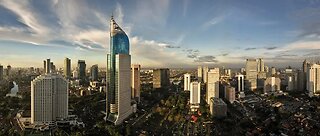 12:32
12:32
WalkAroundTheWorld
1 year agoJakarta - Indonesia (4K) Drone View Footage
137 -
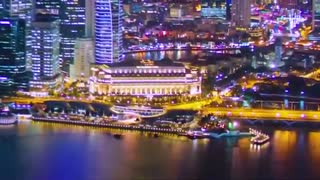 3:11
3:11
Dragonlim8
2 years agoThe Lion City - Singapore
89 -
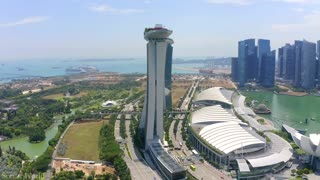 10:29
10:29
XDrone Tribe
4 months agoSingapore in 4K | Lion City | Aerial Drone Footage
102 -
 28:02
28:02
AerialLandscapes
3 years agoNew York City Tourist Attractions 4K Drone Footage
27 -
 21:19
21:19
Endless Journey
1 year agoHua Hin Beach - Top 10 Beach in Thailand - With Drone Footage
20 -
 1:59:36
1:59:36
AerialLandscapes
3 years agoNew York City Skyline Screensaver Live - NYC Drone Video
4 -
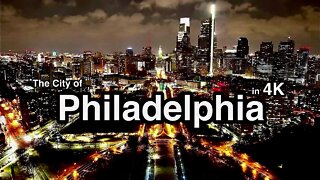 2:05
2:05
AerialLandscapes
2 years agoPhiladelphia by Night | City Drone Footage
3131 -
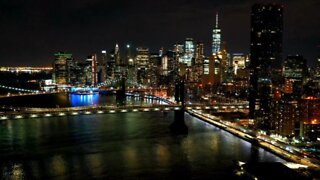 54:20
54:20
AerialLandscapes
3 years agoNew York City Skyline at Night NYC Screensaver Live - NYC Drone Video HD
3 -
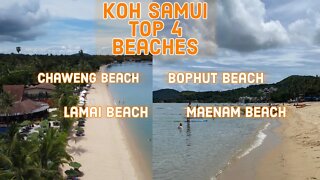 25:59
25:59
Endless Journey
1 year agoTop 4 Beaches on Koh Samui Thailand 2022 - With Drone Footage
41 -
 30:57
30:57
AerialLandscapes
4 years agoNew York City Skyline at Night Screensaver NYC Skyline Aerial Landscapes Drone Video Live
7